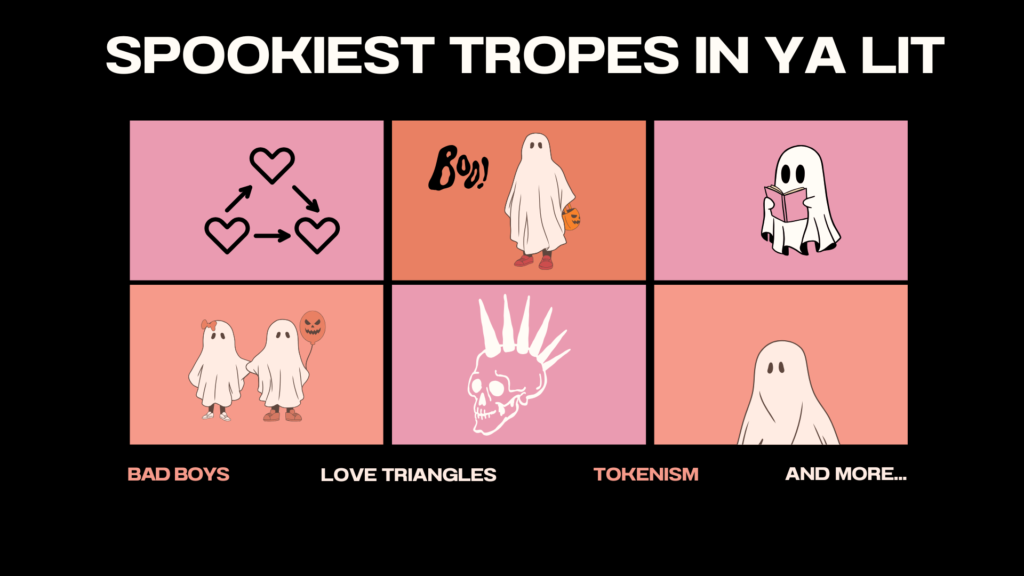
I think it is important for authors, regardless of their gender, to portray female characters as complex and nuanced and break free from previous stereotypes associated with female protagonists. With that being said, I think there are times when authors, notably male ones, take this differentiation too far, and female characters become a misogynistic representation of certain aspects of femininity. Specifically with the “manic-pixie dream girl” trope, it seems like many female characters are utilized solely as the vehicle for the objectification and desires of the male main characters in a story. Also, the elevation and idealization of these “unique” female characters serves to put down other women and more “traditional” portrayals of feminine expression.
As much of an avid Twilight and Hunger Games fan as I was growing up, I have grown exhausted with the love triangle trope, especially in YA literature. In most cases, there always seems to be an obvious choice among the three, and it often feels like one of the characters is set up to get their heart broken. I also take issue with the stringing along of any romantic interests; at a certain point, it is better to let the “other” side of the triangle go rather than continue to raise their hopes. The only thing I consider worse than a poorly-executed love triangle is one that involves siblings (although I am still anxiously awaiting the return of The Summer I Turned Pretty season three and have read all the books). I think the inclusion of siblings in this trope all too often results in the tearing apart of not just friends, but family as well, and I hate to see once-strong bonds broken over what are usually easily avoidable romantic entanglements.
Don’t get me wrong, I love to root for a “troubled” character and am a huge fan of redemption arcs of all kinds. However, one thing I strongly dislike about the “bad boy” trope is that, far too frequently, this type of male protagonist is just genuinely cruel and unlikeable. Especially as a love interest, this archetype, when lacking any redeemable qualities, is almost impossible to root for and detracts from my investment in the story. In these romantic plotlines that revolve around a “bad boy” character, readers should still be able to sense that he cares about and respects his romantic partner. Otherwise, the story promotes unhealthy relationships to a demographic that may be navigating their first relationships.
In a similar vein as my issue with the “not like other girls” depiction in teen literature, I also dislike the way in which women are so often pitted against each other in YA books (and media in general). Even in novels led by female voices, it seems as if more often than not the main antagonist is a woman—and, to make matters worse, her antagonism is frequently centered around the pursuit of a man. While I am not naive enough to say that, in real-life, the bonds of girlhood are never disrupted, this constant portrayal of women as enemies of each other reinforces harmful stereotypes that women are catty, jealous, petty, and willing to put each other down just to receive attention from a man.
Representation is crucial in all forms of literature, but I think YA authors have a heightened responsibility to make young readers feel included and seen. So, it is especially harmful when damaging stereotypes are promoted as inclusivity. I have seen so many instances of this in young adult stories, where a book features only one, or a very limited amount, of characters meant to represent a certain “diverse” group of people who are often quite one-dimensional. Diversity and representation should not be treated as part of a “checklist,” and should instead be handled with great care, an area that needs improvement in YA storytelling.
While I have no problem with the traditional fake dating trope, I think characters sometimes seem to lose all sense of logic when they are in these “relationships.” After a certain point, I feel like these characters must realize when they’ve officially crossed the line into “real” relationship territory (no, he is not just kissing you “as part of the act” when there is no one else around!). I think this trope can be adorable and heartwarming in many situations, but it can just as easily become incredibly frustrating when characters obstinately refuse to see what is right in front of them.
Sam Parker, PRR Writer and Social Media Lead